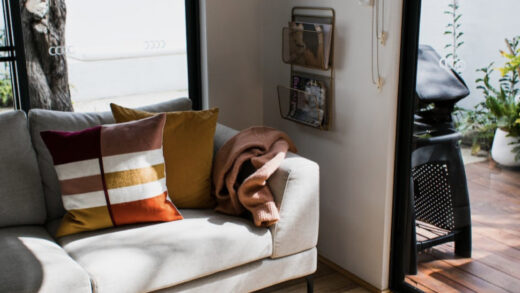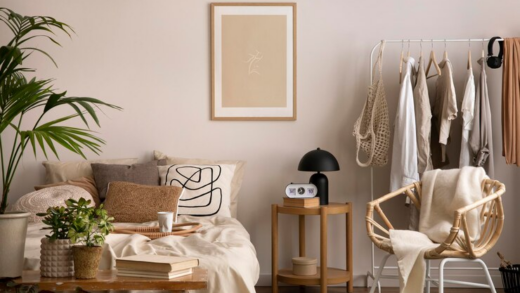A crossroad emerges at the junction of creativity and technology, and it’s called the design industry. From our wardrobe selections to the aesthetic appeal of our abodes, design is an intrinsic part of our daily lives. Passion often guides individuals into this industry, where they face the challenge of choice.
Graphic design (GD) serves as a lucrative career choice, presenting opportunities across various sectors, including fashion, architecture, and interior design. With a foundation in graphic design, women can establish a strong presence in this extensive industry, without the need for a formal degree in certain instances.
A polished portfolio and fundamental qualifications can pave the way for a multitude of exciting career prospects. Let’s explore these possibilities in detail.
The Vibrant Spectrum of Graphic Design
GD constitutes a profitable career path and has shown particular promise for women in the field. The discipline expands into numerous sectors, including fashion, architecture, and interior design, to name a few.
The design industry’s vast scope and the versatility of gGD skills equip designers with the ability to transition across various roles seamlessly.
Graphic Design Meets Architecture: A Synergy of Styles
GD professionals blend graphics, typography, and motion animation to create compelling visual compositions. In architectural design, the focus is on utilizing space and elements to forge coherent and functional structures.
When these two design forms converge, it results in aesthetically pleasing spaces that also offer practicality and functionality.
Women Making Waves in Architectural Design
Women can carve lucrative careers in architectural design, ranging from commercial construction projects to cityscape development as urban planners:
- Architectural Designer: Tasked with the design of construction projects, architectural designers collaborate with clients to understand project requirements and budgetary constraints. Subsequently, they create plans, design specifications, and layouts tailored to the client’s needs. This role calls for meticulous attention to detail and superior organizational skills. While a design degree is not mandatory, design certifications are required. In the U.S., architectural designers earn between $57,800 and $76,100 annually or $27 to $36 hourly;
- Urban Planner: Urban planners evaluate site plans submitted by developers and devise strategies and programs to foster communities and rejuvenate physical facilities in towns, cities, and counties. Urban Planners typically earn between $47,000 & $84,000, with the exact figure depending on education and tenure levels. According to the Bureau of Labor Statistics, job growth in this sector is expected to be around 11% between 2018-2028.
Interior Design: A Canvas for Graphic Designers
Women with a passion for shaping the aesthetics of living and working spaces can find ample opportunities in the interior design industry.
Interior Decorators
These experts transform the ambiance of a client’s space by selecting and arranging decorative elements such as paint, textiles, and furniture. They focus on aesthetics, selecting color schemes, planning furniture layouts, and arranging wall art. Their work revolves around understanding client needs and creating a space that embodies those preferences.

Salaries for Interior Decorators vary, ranging from $39,107 to $136,000 annually. While a degree isn’t a prerequisite, an associate degree is commonplace in the profession.
Corporate Designers: Translating Brand Identity into Workspace Aesthetics
Corporate Interior Designers orchestrate professional and functional work environments that accommodate both small office settings and expansive corporations. This specialization within interior design merges an artistic eye with an understanding of corporate dynamics. Corporate Designers concentrate on fashioning efficient, secure, and engaging spaces for employees, which makes this career ideal for individuals passionate about shaping the workspace milieu.
Salaries for Corporate Designers range from $105,000 to $125,000 annually, with entry-level positions requiring no formal degree but necessitating professional certifications.
Graphic Design: A Strong Influence on Fashion
The correlation between GD and fashion is profound. From crafting captivating lookbooks, fashion prints, to engaging packaging design, GD significantly impacts a brand’s persona, market presence, and overall triumph. The visual narrative of a fashion brand is critical to its reputation and success.
Fashion, which influences various aspects of our lives, conveys our personal narratives through bold prints or professional pinstripes. Fashion and Apparel Designers alongside Product Designers select and design the products we use daily, focusing on ergonomics, aesthetics, and durability.
Fashion & Apparel Graphic Designer:
A promising career trajectory for graphic designers with a penchant for fashion is fashion or apparel design. The salaries for Fashion Product Development roles oscillate between $49,770 and $97,291, with the highest earners garnering $144,811 annually across the United States.

These professionals engage in designing and assisting with the production of clothing, shoes, and accessories. They identify trends, select styles, fabrics, colors, prints, and trims for a collection, sketch and conceptualize designs, and supervise production.
Product Designer
Similar to fashion and apparel designers, product designers establish product specifications, create digital or print drawings, and design fully functional consumer products. From daily use accessories to office supplies and car accessories, Product Designers ensure their durability and affordability.
Product Designers in the United States earn an average annual salary of $84,386, or $41.88 per hour. Entry-level product designer salaries typically start around $57,000 per year, with most roles requiring a bachelor’s degree in engineering or architecture.
Graphic Design: A Gateway to the Business World
Women with expertise in GD can find ample opportunities in the business sector. Their skills can lead them to various roles, from crafting unique brand identities as logo designers to spearheading business marketing and advertising initiatives as marketing managers.
Logo Design
Logo designers, who are specialized graphic designers, create custom brand imagery for individuals or companies. They can operate as freelancers, work full-time at a design firm or advertising agency, or work on a contractual basis.
While a degree or certification is not required, their compensation depends on their experience, skillset, and market demand. Average salaries for logo designers range from $31,000 to $87,000.
Marketing Manager
For those passionate about marketing and advertising, the role of a Marketing Manager can be a profitable choice. These professionals manage the promotion and positioning of a brand or the company’s products and services. This position suits individuals who are enthusiastic about sales, organization, and brand engagement.
Salaries for Marketing Managers range between $93,517 and $126,344, with employers often preferring candidates with a bachelor’s degree in advertising, communications, or related fields. A degree in GD can also be an entryway into this role.
| Career Path | Average Salary | Degree Required |
|---|---|---|
| Corporate Designer | $105,000 – $125,000 | No, Certifications required |
| Fashion & Apparel Graphic Designer | $49,770 – $97,291 | Yes |
| Product Designer | $84,386 | Yes |
| Logo Designer | $31,000 – $87,000 | No |
| Marketing Manager | $93,517 – $126,344 | Yes |
Key Takeaways:
- The design industry offers diverse career paths;
- Salaries in the field vary widely, depending on the specific role and experience;
- While some roles require formal education, others emphasize experience and skills;
- GD serves as a versatile foundation for exploring various design-related careers.
Conclusion
Women with a background in GD can discover numerous lucrative and rewarding career paths in the industry. It’s crucial to pursue areas of interest and passion, and the design industry provides ample opportunities for such exploration.
While GD offers a profitable career path, the skills acquired can also be leveraged to create a significant impact in the fashion, business, and architectural sectors.





